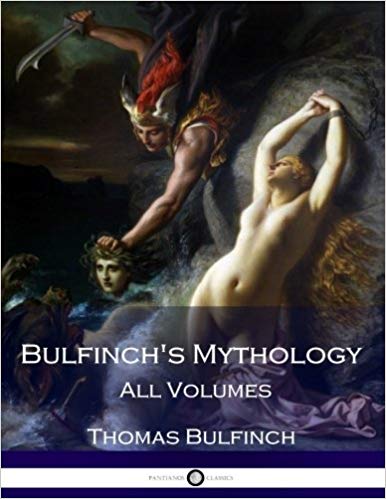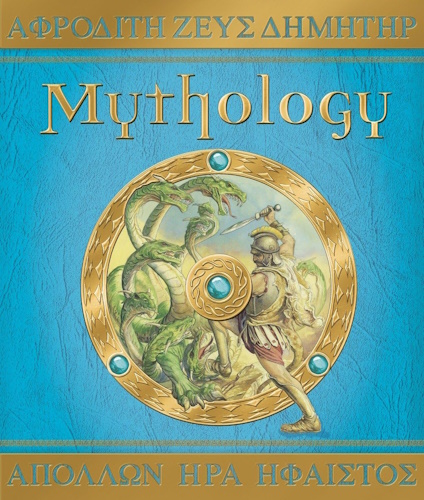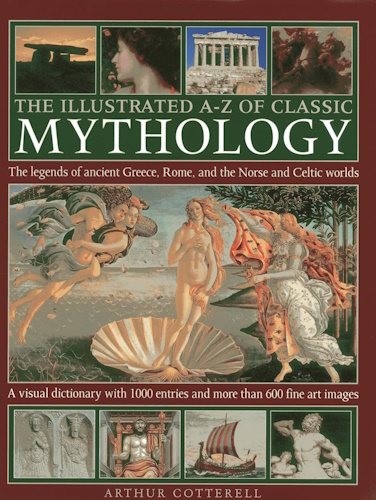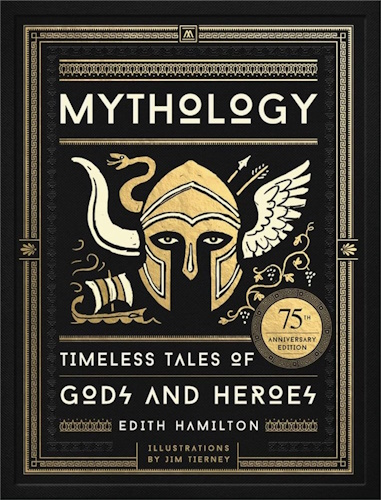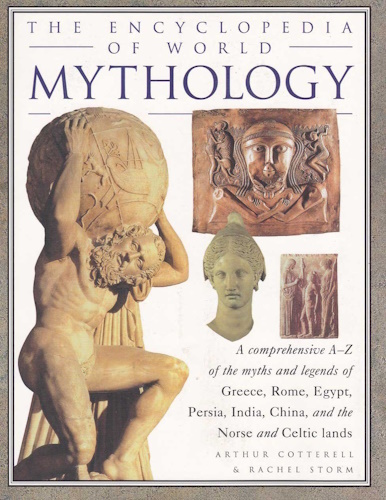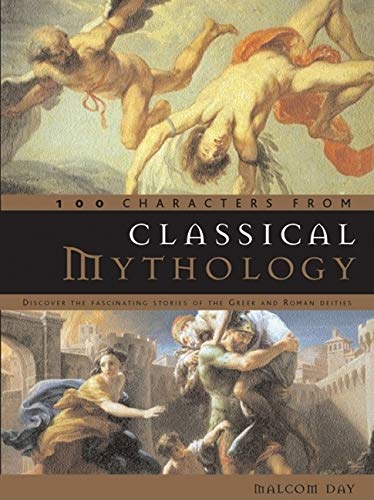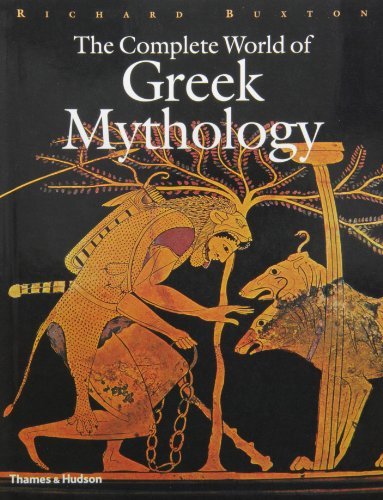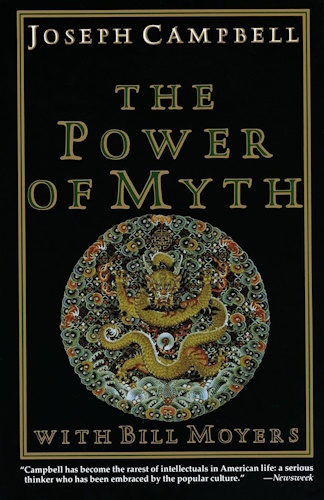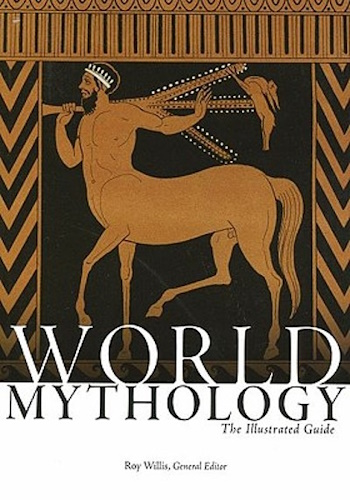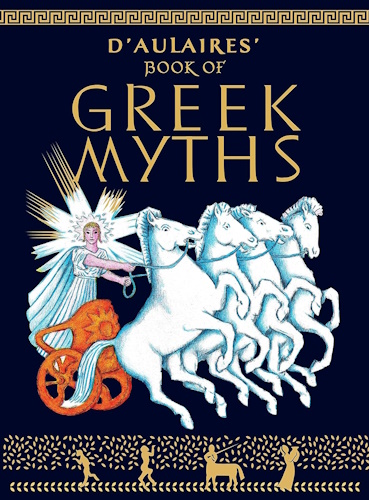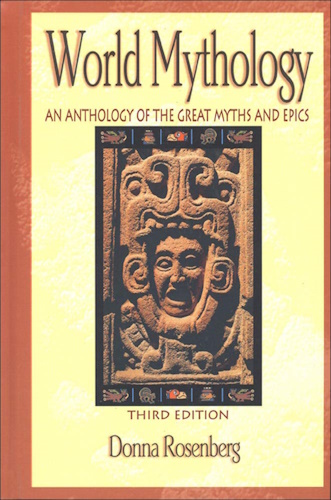
![]()
![]()
CHAPTER XX.
THESEUS- DAEDALUS- CASTOR AND POLLUX.
THESEUS.
THESEUS was the son of AEgeus, king of Athens, and of AEthra, daughter of the king of Troezen. He was brought up at Troezen, and when arrived at manhood was to proceed to Athens and present himself to his father. AEgeus on parting from AEthra, before the birth of his son, placed his sword and shoes under a large stone and directed her to send his son to him when he became strong enough to roll away the stone and take them from under it. When she thought the time had come, his mother led Theseus to the stone, and he removed it with ease and took the sword and shoes. As the roads were infested with robbers, his grandfather pressed him earnestly to take the shorter and safer way to his father's country- by sea; but the youth, feeling in himself the spirit and the soul of a hero, and eager to signalize himself like Hercules, with whose fame all Greece then rang, by destroying the evil-doers and monsters that oppressed the country, determined on the more perilous and adventurous journey by land.
His first day's journey brought him to Epidaurus, where dwelt a man named Periphetes, a son of Vulcan. This ferocious savage always went armed with a club of iron, and all travellers stood in terror of his violence. When he saw Theseus approach he assailed him, but speedily fell beneath the blows of the young hero, who took possession of his club and bore it ever afterwards as a memorial of his first victory.
Several similar contests with the petty tyrants and marauders of the country followed, in all of which Theseus was victorious. One of these evil-doers was called Procrustes, or the Stretcher. He had an iron bedstead, on which he used to tie all travellers who fell into his hands. If they were shorter than the bed, he stretched their limbs to make them fit it; if they were longer than the bed, he lopped off a portion. Theseus served him as he had served others.
Having overcome all the perils of the road, Theseus at length reached Athens, where new dangers awaited him. Medea, the sorceress, who had fled from Corinth after her separation from Jason, had become the wife of AEgeus, the father of Theseus. Knowing by her arts who he was, and fearing the loss of her influence with her husband if Theseus should be acknowledged as his son, she filled the mind of AEgeus with suspicions of the young stranger, and induced him to present him a cup of poison; but at the moment when Theseus stepped forward to take it, the sight of the sword which he wore discovered to his father who he was, and prevented the fatal draught. Medea, detected in her arts, fled once more from deserved punishment, and arrived in Asia, where the country afterwards called Media, received its name from her. Theseus was acknowledged by his father, and declared his successor.
The Athenians were at that time in deep affliction, on account of the tribute which they were forced to pay to Minos, king of Crete. This tribute consisted of seven youths and seven maidens, who were sent every year to be devoured by the Minotaur, a monster with a bull's body and a human head. It was exceedingly strong and fierce, and was kept in a labyrinth constructed by Daedalus, so artfully contrived that whoever was enclosed in it could by no means find his way out unassisted. Here the Minotaur roamed, and was fed with human victims.
Theseus resolved to deliver his countrymen from this calamity, or to die in the attempt. Accordingly, when the time of sending off the tribute came, and the youths and maidens were, according to custom, drawn by lot to be sent, he offered himself as one of the victims, in spite of the entreaties of his father. The ship departed under black sails, as usual, which Theseus promised his father to change for white, in case of his returning victorious. When they arrived in Crete, the youths and maidens were exhibited before Minos; and Ariadne, the daughter of the king, being present, became deeply enamoured of Theseus, by whom her love was readily returned. She furnished him with a sword, with which to encounter the Minotaur, and with a clue of thread by which he might find his way out of the labyrinth. He was successful, slew the Minotaur, escaped from the labyrinth, and taking Ariadne as the companion of his way, with his rescued companions sailed for Athens. On their way they stopped at the island of Naxos, where Theseus abandoned Ariadne, leaving her asleep.* His excuse for this ungrateful treatment of his benefactress was that Minerva appeared to him in a dream and commanded him to do so.
* One of the finest pieces of sculpture in Italy, the recumbent Ariadne of the Vatican, represents this incident. A copy is in the Athenaeum gallery, Boston.
On approaching the coast of Attica, Theseus forgot the signal appointed by his father, and neglected to raise the white sails, and the old king, thinking his son had perished, put an end to his own life. Theseus thus became king of Athens.
One of the most celebrated of the adventures of Theseus is his expedition against the Amazons. He assailed them before they had recovered from the attack of Hercules, and carried off their queen Antiope. The Amazons in their turn invaded the country of Athens and penetrated into the city itself; and the final battle in which Theseus overcame them was fought in the very midst of the city. This battle was one of the favourite subjects of the ancient sculptors, and is commemorated in several works of art that are still extant.
The friendship between Theseus and Pirithous was of a most intimate nature, yet it originated in the midst of arms. Pirithous had made an irruption into the plain of Marathon, and carried off the herds of the king of Athens. Theseus went to repel the plunderers. The moment Pirithous beheld him, he was seized with admiration; he stretched out his hand as a token of peace, and cried, "Be judge thyself- what satisfaction dost thou require?" "Thy friendship," replied the Athenian, and they swore inviolable fidelity. Their deeds corresponded to their professions, and they ever continued true brothers in arms. Each of them aspired to espouse a daughter of Jupiter. Theseus fixed his choice on Helen, then but a child, afterwards so celebrated as the cause of the Trojan war, and with the aid of his friend he carried her off. Pirithous aspired to the wife of the monarch of Erebus; and Theseus, though aware of the danger, accompanied the ambitious lover in his descent to the underworld. But Pluto seized and set them on an enchanted rock at his palace gate, where they remained till Hercules arrived and liberated Theseus, leaving Pirithous to his fate.
After the death of Antiope, Theseus married Phaedra, daughter of Minos, king of Crete. Phaedra saw in Hippolytus, the son of Theseus, a youth endowed with all the graces and virtues of his father, and of an age corresponding to her own. She loved him, but he repulsed her advances, and her love was changed to hate. She used her influence over her infatuated husband to cause him to be jealous of his son, and he imprecated the vengeance of Neptune upon him. As Hippolytus was one day driving his chariot along the shore, a sea-monster raised himself above the waters, and frightened the horses so that they ran away and dashed the chariot to pieces. Hippolytus was killed, but by Diana's assistance AEsculapius restored him to life. Diana removed Hippolytus from the power of his deluded father and false stepmother, and placed him in Italy under the protection of the nymph Egeria.
Theseus at length lost the favour of his people, and retired to the court of Lycomedes, king of Scyros, who at first received him kindly, but afterwards treacherously slew him. In a later age the Athenian general Cimon discovered the place where his remains were laid, and caused them to be removed to Athens, where they were deposited in a temple called the Theseum, erected in honour of the hero.
The queen of the Amazons whom Theseus espoused is by some called Hippolyta. That is the name she bears in Shakespeare's "Midsummer Night's Dream,"- the subject of which is the festivities attending the nuptials of Theseus and Hippolyta.
Mrs. Hemans has a poem on the ancient Greek tradition that the "Shade of Theseus" appeared strengthening his countrymen at the battle of Marathon.
Theseus is a semi-historical personage. It is recorded of him that he united the several tribes by whom the territory of Attica was then possessed into one state, of which Athens was the capital. In commemoration of this important event, he instituted the festival of Panathenaea, in honour of Minerva, the patron deity of Athens. This festival differed from the other Grecian games chiefly in two particulars. It was peculiar to the Athenians, and its chief feature was a solemn procession in which the Peplus, or sacred robe of Minerva, was carried to the Parthenon, and suspended be, fore the statue of the goddess. The Peplus was covered with embroidery, worked by select virgins of the noblest families in Athens. The procession consisted of persons of all ages and both sexes. The old men carried olive branches in their hands, and the young men bore arms. The young women carried baskets on their heads, containing the sacred utensils, cakes, and all things necessary for the sacrifices. The procession formed the subject of the bas-reliefs which embellished the outside of the temple of the Parthenon. A considerable portion of these sculptures is now in the British Museum among those known as the "Elgin marbles."
OLYMPIC AND OTHER GAMES.
It seems not inappropriate to mention here the other celebrated national games of the Greeks. The first and most distinguished were the Olympic, founded, it was said, by Jupiter himself. They were celebrated at Olympia in Elis. Vast numbers of spectators flocked to them from every part of Greece, and from Asia, Africa and Sicily. They were repeated every fifth year in midsummer, and continued five days. They gave rise to the custom of reckoning time and dating events by Olympiads. The first Olympiad is generally considered as corresponding with the year 776 B.C. The Pythian games were celebrated in the vicinity of Delphi, the Isthmian on the Corinthian Isthmus, the Nemean at Nemea, a city of Argolis.
The exercises in these games were of five sorts: running, leaping, wrestling, throwing the quoit, and hurling the javelin, or boxing. Besides these exercises of bodily strength and agility there were contests in music, poetry and eloquence. Thus these games furnished poets, musicians and authors the best opportunities to present their productions to the public, and the fame of the victors was diffused far and wide.
DAEDALUS.
The labyrinth from which Theseus escaped by means of the clew of Ariadne was built by Daedalus, a most skilful artificer. It was an edifice with numberless winding passages and turnings opening into one another, and seeming to have neither beginning nor end, like the river Maeander, which returns on itself, and flows now onward, now backward, in its course to the sea. Daedalus built the labyrinth for King Minos, but afterwards lost the favour of the king, and was shut up in a tower. He contrived to make his escape from his prison, but could not leave the island by sea, as the king kept strict watch on all the vessels, and permitted none to sail without being carefully searched. "Minos may control the land and sea," said Daedalus, "but not the regions of the air. I will try that way." So he set to work to fabricate wings for himself and his young son Icarus. He wrought feathers together, beginning with the smallest and adding larger, so as to form an increasing surface. The larger ones he secured with thread and the smaller with wax, and gave the whole a gentle curvature like the wings of a bird. Icarus, the boy, stood and looked on, sometimes running to gather up the feathers which the wind had blown away, and then handling the wax and working it over with his fingers, by his play impeding his father in his labours. When at last the work was done, the artist, waving his wings, found himself buoyed upward, and hung suspended, poising himself on the beaten air. He next equipped his son in the same manner and taught him how to fly, as a bird tempts her young ones from the lofty nest into the air. When all was prepared for flight he said, "Icarus, my son, I charge you to keep at a moderate height, for if you fly too low the damp will clog your wings, and if too high the heat will melt them. Keep near me and you will be safe." While he gave him these instructions and fitted the wings to his shoulders, the face of the father was wet with tears, and his hands trembled. He kissed the boy, not knowing that it was for the last time. Then rising on his wings, he flew off, encouraging him to follow, and looked back from his own flight to see how his son managed his wings. As they flew the ploughman stopped his work to gaze, aid the shepherd leaned on his staff and watched them, astonished at the sight, and thinking they were gods who could thus cleave the air.
They passed Samos and Delos on the left and Lebynthos on the right, when the boy, exulting in his career, began to leave the guidance of his companion and soar upward as if to reach heaven. The nearness of the blazing sun softened the wax which held the feathers together, and they came off. He fluttered with his arms, but no feathers remained to hold the air. While his mouth uttered cries to his father it was submerged in the blue waters of the sea which thenceforth was called by his name. His father cried, "Icarus, Icarus, where are you?" At last he saw the feathers floating on the water, and bitterly lamenting his own arts, he buried the body and called the land Icaria in memory of his child. Daedalus arrived safe in Sicily, where he built a temple to Apollo, and hung up his wings, an offering to the god.
Daedalus was so proud of his achievements that he could not bear the idea of a rival. His sister had placed her son Perdix under his charge to be taught the mechanical arts. He was an apt scholar and gave striking evidences of ingenuity. Walking on the seashore he picked up the spine of a fish. Imitating it, he took a piece of iron and notched it on the edge, and thus invented the saw. He, put two pieces of iron together, connecting them at one end with a rivet, and sharpening the other ends, and made a pair of compasses. Daedalus was so envious of his nephew's performances that he took an opportunity, when they were together one day on the top of a high tower to push him off. But Minerva, who favours ingenuity, saw him falling, and arrested his fate by changing him into a bird called after his name, the Partridge. This bird does not build his nest in the trees, nor take lofty flights, but nestles in the hedges, and mindful of his fall, avoids high places.
The death of Icarus is told in the following lines by Darwin:
"...with melting wax and loosened stringsSunk hapless Icarus on unfaithful wings;
Headlong he rushed through the affrighted air,
With limbs distorted and dishevelled hair;
His scattered plumage danced upon the wave,
And sorrowing Nereids decked his watery grave;
O'er his pale corse their pearly sea-flowers shed,
And strewed with crimson moss his marble bed;
Struck in their coral towers the passing bell,
And wide in ocean tolled his echoing knell."
CASTOR AND POLLUX.
Castor and Pollux were the offspring of Leda and the Swan, under which disguise Jupiter had concealed himself. Leda gave, birth to an egg from which sprang the twins. Helen, so famous afterwards as the cause of the Trojan war, was their sister.
When Theseus and his friend Pirithous had carried off Helen from Sparta, the youthful heroes, Castor and Pollux, with their followers, hastened to her rescue. Theseus was absent from Attica and the brothers were successful in recovering their sister.
Castor was famous for taming and managing horses, and Pollux for skill in boxing. They were united by the warmest affection and inseparable in all their enterprises. They accompanied the Argonautic expedition. During the voyage a storm arose, and Orpheus prayed to the Samothracian gods, and played on his harp, whereupon the storm ceased and stars appeared on the heads of the brothers. From this incident, Castor and Pollux came afterwards to be considered the patron deities of seamen and voyagers, and the lambent flames, which in certain states of the atmosphere play round the sails and masts of vessels, were called by their names.
After the Argonautic expedition, we find Castor and Pollux engaged in a war with Idas and Lynceus. Castor was slain, and Pollux, inconsolable for the loss of his brother, besought Jupiter to be permitted to give his own life as a ransom for him. Jupiter so far consented as to allow the two brothers to enjoy the boon of life alternately, passing one day under the earth and the next in the heavenly abodes. According to another form of the story, Jupiter rewarded the attachment of the brothers by placing them among the stars as Gemini the Twins.
They received divine honours under the name of Dioscuri (sons of Jove). They were believed to have appeared occasionally in later times, taking part with one side or the other, in hard-fought fields, and were said on such occasions to be mounted on magnificent white steeds. Thus in the early history of Rome they are said to have assisted the Romans at the battle of Lake Regillus, and after the victory a temple was erected in their honour on the spot where they appeared.
Macaulay, in his "Lays of Ancient Rome," thus alludes to the legend:
"So like they were, no mortalMight one from other know;
White as snow their armour was,
Their steeds were white as snow.
Never on earthly anvil
Did such rare armour gleam,
And never did such gallant steeds
Drink of an earthly stream.
"Back comes the chief in triumph
Who in the hour of fight
Hath seen the great twin Brethren
In harness on his right.
Safe comes the ship to haven,
Through billows and through gales,
If once the great Twin Brethren
Sit shining on the sails."
-
Urantia Book, 44:0.11 - The Celestial Artisans
Never in your long ascendancy will you lose the power to recognize your associates of former existences. Always, as you ascend inward in the scale of life, will you retain the ability to recognize and fraternize with the fellow beings of your previous and lower levels of experience. Each new translation or resurrection will add one more group of spirit beings to your vision range without in the least depriving you of the ability to recognize your friends and fellows of former estates.
-
Princess Bride 1987 Wallace Shawn (Vizzini) and Mandy Patinkin (Inigo Montoya)
Vizzini: HE DIDN'T FALL? INCONCEIVABLE.
Inigo Montoya: You keep using that word. I do not think it means what you think it means. -
Urantia Book, 117:4.14 - The Finite God
And here is mystery: The more closely man approaches God through love, the greater the reality -- actuality -- of that man. The more man withdraws from God, the more nearly he approaches nonreality -- cessation of existence. When man consecrates his will to the doing of the Father's will, when man gives God all that he has, then does God make that man more than he is.
-
Urantia Book, 167:7.4 - The Talk About Angels
"And do you not remember that I said to you once before that, if you had your spiritual eyes anointed, you would then see the heavens opened and behold the angels of God ascending and descending? It is by the ministry of the angels that one world may be kept in touch with other worlds, for have I not repeatedly told you that I have other sheep not of this fold?"
-
Urantia Book, Foreword - 0:12.12 - The Trinities
But we know that there dwells within the human mind a fragment of God, and that there sojourns with the human soul the Spirit of Truth; and we further know that these spirit forces conspire to enable material man to grasp the reality of spiritual values and to comprehend the philosophy of universe meanings. But even more certainly we know that these spirits of the Divine Presence are able to assist man in the spiritual appropriation of all truth contributory to the enhancement of the ever-progressing reality of personal religious experience—God-consciousness.
-
Urantia Book, 1:4.3 - The Mystery Of God
When you are through down here, when your course has been run in temporary form on earth, when your trial trip in the flesh is finished, when the dust that composes the mortal tabernacle "returns to the earth whence it came"; then, it is revealed, the indwelling "Spirit shall return to God who gave it." There sojourns within each moral being of this planet a fragment of God, a part and parcel of divinity. It is not yet yours by right of possession, but it is designedly intended to be one with you if you survive the mortal existence.
-
Urantia Book, 1:4.1 - The Mystery Of God
And the greatest of all the unfathomable mysteries of God is the phenomenon of the divine indwelling of mortal minds. The manner in which the Universal Father sojourns with the creatures of time is the most profound of all universe mysteries; the divine presence in the mind of man is the mystery of mysteries.
-
Urantia Book, 1:4.6 - The Mystery Of God
To every spirit being and to every mortal creature in every sphere and on every world of the universe of universes, the Universal Father reveals all of his gracious and divine self that can be discerned or comprehended by such spirit beings and by such mortal creatures. God is no respecter of persons, either spiritual or material. The divine presence which any child of the universe enjoys at any given moment is limited only by the capacity of such a creature to receive and to discern the spirit actualities of the supermaterial world.
-
Urantia Book, 11:0.1 - The Eternal Isle Of Paradise
Paradise is the eternal center of the universe of universes and the abiding place of the Universal Father, the Eternal Son, the Infinite Spirit, and their divine co-ordinates and associates. This central Isle is the most gigantic organized body of cosmic reality in all the master universe. Paradise is a material sphere as well as a spiritual abode. All of the intelligent creation of the Universal Father is domiciled on material abodes; hence must the absolute controlling center also be material, literal. And again it should be reiterated that spirit things and spiritual beings are real.
-
Urantia Book, 50:6.4 - Planetary Culture
Culture presupposes quality of mind; culture cannot be enhanced unless mind is elevated. Superior intellect will seek a noble culture and find some way to attain such a goal. Inferior minds will spurn the highest culture even when presented to them ready-made.
-
Urantia Book, 54:1.6 - True And False Liberty
True liberty is the associate of genuine self-respect; false liberty is the consort of self-admiration. True liberty is the fruit of self-control; false liberty, the assumption of self-assertion. Self-control leads to altruistic service; self-admiration tends towards the exploitation of others for the selfish aggrandizement of such a mistaken individual as is willing to sacrifice righteous attainment for the sake of possessing unjust power over his fellow beings.
-
Urantia Book, 54:1.9 - True And False Liberty
How dare the self-willed creature encroach upon the rights of his fellows in the name of personal liberty when the Supreme Rulers of the universe stand back in merciful respect for these prerogatives of will and potentials of personality! No being, in the exercise of his supposed personal liberty, has a right to deprive any other being of those privileges of existence conferred by the Creators and duly respected by all their loyal associates, subordinates, and subjects.
-
Urantia Book, 54:1.8 - True And False Liberty
There is no error greater than that species of self-deception which leads intelligent beings to crave the exercise of power over other beings for the purpose of depriving these persons of their natural liberties. The golden rule of human fairness cries out against all such fraud, unfairness, selfishness, and unrighteousness.
